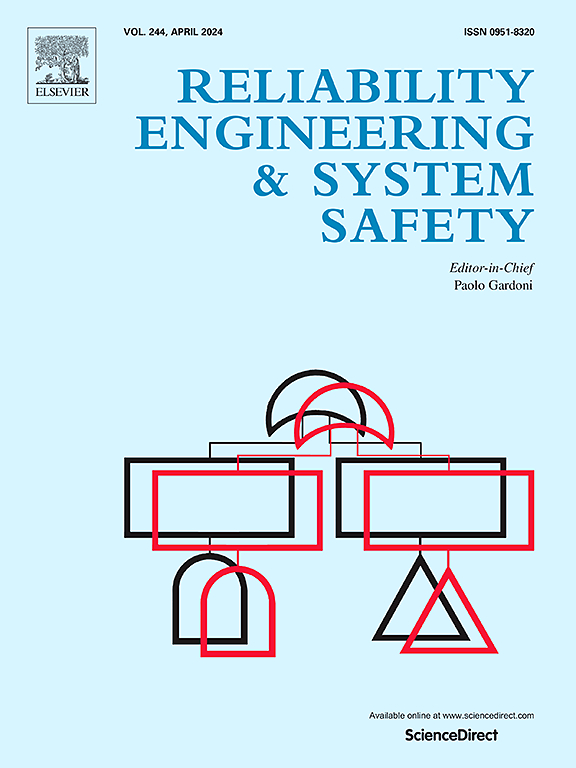Damage risk assessment of transmission towers based on the combined probability spatial-temporal distribution of strong winds and earthquakes
IF 9.4
1区 工程技术
Q1 ENGINEERING, INDUSTRIAL
引用次数: 0
Abstract
Extreme loads can inflict significant damage on structures, posing serious risks to their safety and longevity. Numerous investigations have concentrated on the response of structures to isolated extreme loads, often neglecting the compounded damage resulting from multiple hazards, such as severe winds and seismic events. The lack of clear criteria for assessing the co-occurrence of strong winds and earthquakes, along with ambiguous spatial and temporal relationships and inadequate statistical methodologies, has resulted in a gap in comprehensive lifetime damage assessments based on the actual probabilities of these events occurring together. In this context, the present study introduces a data-driven methodology for damage risk assessment in engineering structures, taking into account the spatial and temporal probability distributions of strong winds and earthquakes. A joint probability distribution model was established utilizing 50 years of historical data from the Sichuan-Yunnan region of China, an area characterized by frequent occurrences of both strong winds and earthquakes, while integrating spatial-temporal criteria for the simultaneous occurrence of these phenomena. Utilizing this model, the nonlinear dynamic response characteristics of a representative transmission tower under the combined influence of strong winds and earthquakes were analyzed, alongside an evaluation of structural performance through fragility analysis and the damage risk probability associated with multi-hazard scenarios. The findings reveal that strong winds and earthquakes have co-occurred 996 times in the region over the past 50 years, underscoring the significant likelihood of simultaneous occurrences. Furthermore, in contrast to susceptibility-based structural performance assessments, the damage risk evaluation highlights the influence of high-probability disaster events on the lifecycle of the structure.
求助全文
约1分钟内获得全文
求助全文
来源期刊

Reliability Engineering & System Safety
管理科学-工程:工业
CiteScore
15.20
自引率
39.50%
发文量
621
审稿时长
67 days
期刊介绍:
Elsevier publishes Reliability Engineering & System Safety in association with the European Safety and Reliability Association and the Safety Engineering and Risk Analysis Division. The international journal is devoted to developing and applying methods to enhance the safety and reliability of complex technological systems, like nuclear power plants, chemical plants, hazardous waste facilities, space systems, offshore and maritime systems, transportation systems, constructed infrastructure, and manufacturing plants. The journal normally publishes only articles that involve the analysis of substantive problems related to the reliability of complex systems or present techniques and/or theoretical results that have a discernable relationship to the solution of such problems. An important aim is to balance academic material and practical applications.
 求助内容:
求助内容: 应助结果提醒方式:
应助结果提醒方式:


